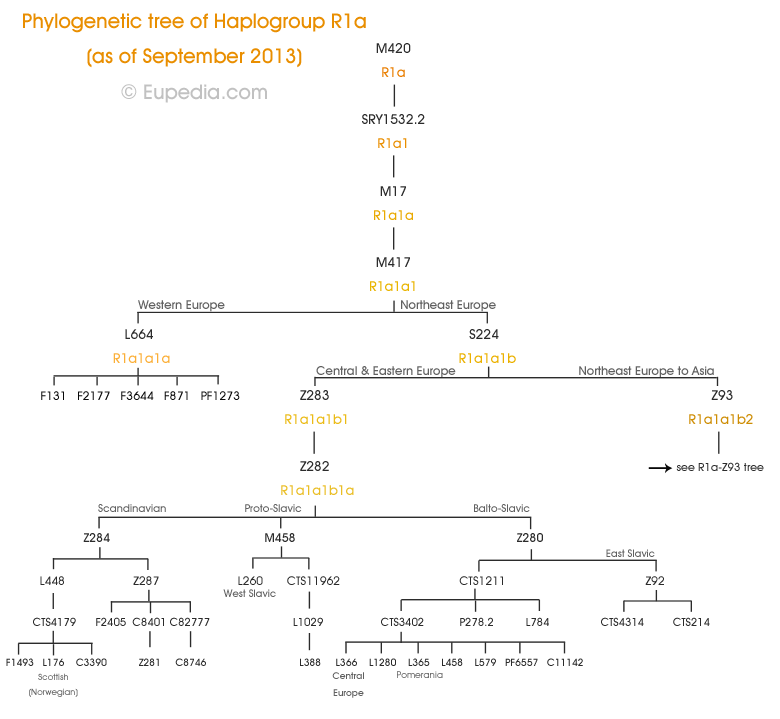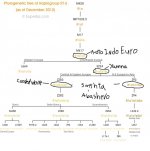Fire Haired
Regular Member
- Messages
- 689
- Reaction score
- 32
- Points
- 0
- Ethnic group
- Celto-Germanic, Latino(~6%)
- Y-DNA haplogroup
- R1b Df27(Spain)
- mtDNA haplogroup
- U5b2a2(Prussia)

Batlo Slavic and Indo Iranian are both Indo European but technically are their own families there is not enough linguistic evidence to say which other indo european languages their most related to. I think their most related to each other for many reasons not because i know about linguistics.
Proto Balto Slavic languages according to the Kurgen theory are suppose to come from Corded ware culture Indo Iranian languages are suppose to come from Sinshtaand Abashevo culture. Both Sinshta-- Abashevo and corded ware descend from Yamna culture. So Balto Slavic and Indo Iranien languages trace back to the same culture that existed in Russia 5,000-6,000ybp. Also we have 4 Y DNA samples from Corded ware culture two 4,800 year old ones from Poland one had either I or J(probably I2a1b), another had G(probably G2a), then two from central Germany they where 4,600 years old both had R1a1a.
The oldest Indo Iranien Y DNA discovered is in west China the tarum mummies they are from the time of Sinshta culture from 7 y dna samples all had R1a1a. From 3,800 year old Indo Iranian y DNA in near by south Siberia out of three Y DNA samples two had R1a1a and one had Siberia C. Out of 17 total ancient y DNA from Indo Iranien cultures in asia and eastern Europe 16 had R1a1a one had Siberia C. I have a thread where i explain all ancient Indo Iranian DNA ever discovered.
So both early Indo Iranian and early Batlo Slavic cultures had mainly R1a1a. That is exactly what was excepted because R1a1a dominates Indo Iranian and Balto Slavaic speaking people today and so many people have connected it to the spread of Yamna culture descendants and Indo Iranian and Balto Slavic languages. Also Indo Iranian R1a and Balto Slavic R1a are brothers. Indo Iranian is R1a1a1b2 Balto Slavic is R1a1a1b1. The ancient remains where not tested for those subclades so all we know for sure is they went as far down in the R1a tree as R1a1a.
So Indo Iranian and Balto Slavic both descend from Yamna culture and Y DNA R1a1a1b. To me this must mean they are related in language too just since they have been separated for about 6,000 years it is hard for linguistics to find how they are related. German scientist recently(june 2013) got 6 Y DNA samples from Yamna culture kurgens they are 6,000-5,000 years old. I am totally excepting R1a1a1b if they test it that far. Also the pigmentation genes from early Indo Iranian culture in south Siberia and central Asia had mainly light hair and eyes but pigmentation genes from Yamna culture the German scientist have released some info om that had mainly brown eyes i would guess mainly brown hair. Also they say Yamna was very unrelated to DNA from Indo Iranians in tagar Russia from 3,000ybp. They did not say what type of DNA test they did and compared the two with but i believe them. It makes sense since the eye color was so different.
So even though Indo Iranians descend from Yamna culturally and by Y DNA that does not been they are really related. Indo Iranians may come form another people group around Russia 6,000ybp that where conquered by Yamna and got the language, culture, and Y DNA. So i defntley think proto Indo Iranian Balto Slavic is a branch in Indo European languages and that Yamna culture spoke that language and Y DNA R1a1a1b is their Y DNA marker.
I know that it may be hard to understand this i am not the best at explain things. So basically what i am saying is Balto Slavic and Indo Iranian languages are in the same family. Yamana culture spoke proto Balto Slavic Indo Iranian. since Balto Slavic's and Indo Iranians are brother in R1a(Indo Iranian is R1a1a1b2, Balto Slavic is R1a1a1b1) that Yamna culture had the father of Balto Slavic and Indo Iranian which is R1a1a1b.
R1a1a1b=Yamana culture= Proto Balto Slavic Indo Iranien language
R1a1a1b1=Corded ware culture= proto Balto Slavic language
R1a1a1b2=Sinshta-Abashevo culture= proto Indo Iranian language
Attachments
Last edited:


